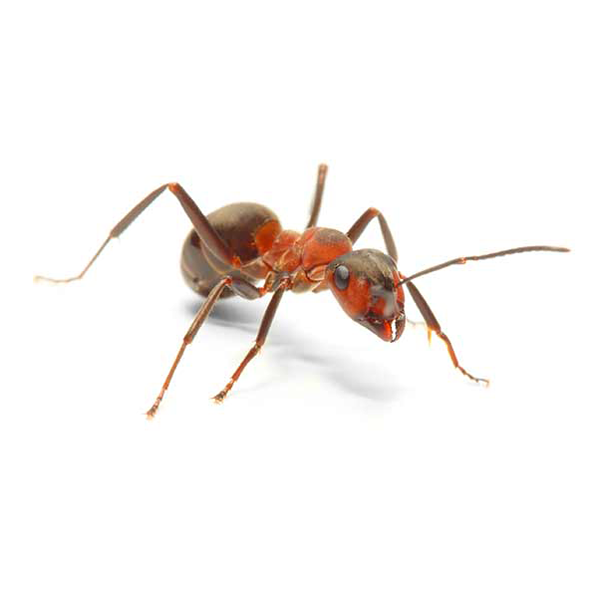Field Ant Identification
Field ants get their name for their preference of nesting out in the open and are a common ant species found throughout the North Carolina area. Constructing large mounds in lawns, playgrounds, and parks, field ants nest in close proximity to humans. With mounds reaching up to three or four feet wide and up to two feet tall, they can affect grass growth and landscapes. Not known for entering homes, most field ants cause issues for homeowners when they nest near masonry walls and concrete sidewalks, destroying the appearance of lawns and can make mowing difficult.
What Do Field Ants Look Like?
Field ants are generally larger than typical house ants, ranging from 4 to 8 mm in length. Their coloration varies from red to black or a combination of both. These ants have elongated heads, strong mandibles, and a segmented body. Unlike carpenter ants, field ants do not have a smooth, rounded thoracic dorsum.
Signs of a Field Ant Infestation
An infestation of field ants is often indicated by visible ant trails leading to and from their nests, which are commonly seen as mounds in fields or lawns. Another sign is increased ant activity around food sources, especially outdoors.
Habitat, Diet, Life Cycle & Bites
Where Do Field Ants Live?
Sometimes referred to as “thatching” or “mound” ants, field ants nest in soil or decayed logs. They prefer sunny locations and may construct mounds that can be quite large, depending on the species. Nests are composed of small twigs, grass stems, leaves, or pine needles. Shrubs, rocks, trees, sidewalks, fences, and foundations of structures are all popular locations for nesting sites, as well as open areas like fields, parks, and yards.
Diet of Field Ants
Unlike most ant pests, field ants do not forage indoors for food. Their diet is diverse, they feed exclusively on outdoor food resources, such as live and dead insects, seeds, and sweet substances like the honeydew produced by aphids. Field ants play a crucial role in the ecosystem by aerating soil and controlling pest populations.
Life Cycle of Field Ants
The life cycle of field ants involves the complete metamorphosis from egg to larva, pupa, and adult. Queens lay eggs in the nest, which are cared for by worker ants until they mature into adults.
Field Ant Bites
Field ants can bite if their nests are disturbed. While their bites can be painful due to their large mandibles, they are not poisonous and generally do not cause lasting harm. If field ant nests are disturbed or stood upon, ants will swarm out of the nest, attacking and biting the intruder. Their bite is usually painful, with some species spraying formic acid into the wound, which stings.
Are Field Ants Dangerous?
Field ant bites do not have any long-term consequences, and after a short period of time, the painful sensation subsides. The large mounds that field ants build can ruin the look of lawns, making lawn mowing difficult, and interfere with the growth of garden plants and woody ornamentals. If a field ant infestation is suspected, it is best to consult a professional ant exterminator.
How to Get Rid of Field Ants?
To control field ant populations, it’s essential to manage their food sources and nesting areas. Regular lawn maintenance, reducing standing water, and proper food storage can help. For significant infestations, professional ant control may be necessary.
Field Ant Prevention Tips
Prevent field ants by maintaining a clean and tidy outdoor environment. Remove potential food sources, keep lawns trimmed, and address moisture issues. Seal cracks and crevices in your home’s exterior to prevent them from moving indoors.
Need help with Field Ants control?
FAQs
What is the Difference Between a Carpenter Ant and a Field Ant?
Carpenter ants are typically larger and have a smoother thoracic profile compared to the more varied and less uniform appearance of field ants. Carpenter ants also nest in wood, while field ants build their nests in the ground.
How Do You Identify Field Ants?
Field ants can be identified by their size (4 to 8 mm), color (ranging from red to black), and nesting habits (ground mounds in open, sunny areas).





